Q
How to replace the headlights in a Honda Jazz ?
To replace the headlights of a Honda Jazz, first prepare the appropriate new headlight assembly and tools. Open the hood of the engine, find the fixing device at the back of the headlight, and loosen the relevant screws or buckles. Disconnect the electrical connector of the headlight, and carefully remove the old headlight. Install the new headlight in reverse order, ensuring that it is securely fixed and the electrical connection is normal. After installation, check whether the lighting effect of the headlight is normal. It should be noted that the operation process should be careful to avoid damaging the vehicle parts.
Special Disclaimer: This content is published by users and does not represent the views or position of PCauto.
Related Q&A
Q
What Segment is Honda Jazz?
The Honda Jazz is classified as a B-Segment small hatchback in the Malaysian market. This segment is typically characterized by flexible handling, economic practicality, and convenience for urban commuting, making it suitable for Malaysia's narrow streets and high fuel costs. The Jazz has become a popular choice in this segment, especially among young families and urban commuters, thanks to its iconic "Magic Seat" flexible seating design, efficient Earth Dreams engine technology, and spacious interior within a compact body.
In the Malaysian market, competing models in the same segment include the Toyota Yaris and Perodua Myvi. However, the Jazz is well - known for the high resale value and reliability of the Honda brand. It's worth noting that B - Segment vehicles in the Southeast Asian market generally prioritize fuel economy and maintenance costs. The combination of the Jazz's 1.5L i - VTEC engine and CVT transmission can achieve an actual fuel consumption of over 15 km/L, meeting the local consumers' demand for practicality.
In addition, this vehicle line was upgraded to a hybrid version in some global markets in 2021. However, the current models in Malaysia still mainly use traditional fuel power. Whether a new energy version will be introduced in the future depends on Honda's regional strategic adjustments.
Q
What is the Reslae Value of Honda Jazz?
The resale value of the Honda Jazz in the Malaysian used - car market is relatively stable. This is due to its reliable quality, low fuel consumption, and the high local recognition of the Honda brand. Depending on the vehicle's age, mileage, and condition, a 3 - to 5 - year - old Jazz can usually retain 50% - 65% of its original price. The Hybrid models may have a 5% - 8% premium because of their energy - saving features.
The key factors affecting its residual value include regular maintenance records (especially the maintenance of the CVT transmission), the body color (white and silver are more popular), and whether it is still within the original factory warranty period. It is recommended that car owners keep complete maintenance receipts and use original factory parts to maximize the vehicle's value retention.
Among its peers, the used - car price performance of the Jazz is better than some of its competitors. This is related to its flexible space design (such as the ULTRA seat system) and low failure rate. However, the specific transaction price still needs to refer to the real - time data on used - car platforms like Carlist or mytukar.
It's worth noting that the tax - exemption policy for domestic cars introduced in some regions after 2020 has slightly affected the price fluctuations of imported used cars. But as a cost - effective urban vehicle, the demand for the Jazz remains strong in urban areas like the Klang Valley.
Q
How Many CC is Honda Jazz?
The Honda Jazz models available in the Malaysian market are mainly equipped with a 1.5 - liter naturally aspirated engine with a displacement of 1497cc (cubic centimeters). This is a common 'golden displacement' for compact hatchbacks, balancing fuel economy and power performance. This engine uses Honda's i - VTEC technology, capable of outputting approximately 120 horsepower and 145 Nm of torque. It is paired with a CVT transmission or a 6 - speed manual transmission (depending on the version), which is suitable for urban commuting and flexible driving.
It's worth noting that while the displacement (CC) affects power output, the actual driving experience also depends on engine tuning, vehicle weight, and the matching of the transmission system. For example, Honda has optimized the combustion efficiency of the Jazz through Earth Dreams technology, making the torque more abundant at low speeds. Malaysian customers can also pay attention to the minor changes in different model years when making a choice. For instance, some versions after 2020 have upgraded the Honda SENSING safety system.
Similar models in the same class, such as the Toyota Yaris or Perodua Myvi, also use a similar displacement, but they have different technological focuses. It is recommended to take test drives for comparison. Additionally, Malaysia's automotive tax structure gives vehicles with a displacement below 1.5 liters a price advantage, which is also one of the reasons why the Jazz has been popular for a long time.
Q
What is the Engine in Honda Jazz?
The Honda Jazz available in the Malaysian market is equipped with a 1.5-liter i-VTEC naturally aspirated gasoline engine. This engine is well - known for its high efficiency and reliability. It has a maximum output power of approximately 120 horsepower and a peak torque of 145 Nm, making it suitable for city driving and daily commuting while also taking fuel economy into account.
This engine adopts Honda's classic i-VTEC technology, which optimizes power output and fuel consumption through an intelligent variable valve timing and lift system. Paired with a CVT continuously variable transmission, it offers a smooth driving experience.
In addition, the Honda Jazz also comes in a hybrid version (such as the e:HEV). It combines a 1.5-liter Atkinson cycle engine with a dual - motor system, further enhancing energy - saving efficiency, which is ideal for consumers with higher environmental protection requirements.
For Malaysian users, the durability and low maintenance cost of this engine are also among the reasons for its popularity. Moreover, Honda's after - sales service network covers the whole country, providing convenience for car owners. When it comes to the used - car market, the engine of the Jazz also has a relatively high resale value, making it an economical and practical choice.
Q
What is the Gearbox Type of Honda Jazz?
The transmission types vary among different versions of the Honda Jazz. Specifically, the 2019 Honda Jazz 1.5 S, 1.5 E, and 1.5 V versions all come with a CVT (Continuously Variable Transmission). This type of transmission offers a smooth shifting experience, making the driving process even more seamless and also helping to improve fuel efficiency.
On the other hand, the 2019 Honda Jazz 1.5 Hybrid version is equipped with a DCT (Dual-Clutch Transmission). A dual-clutch transmission allows for rapid gear changes and highly efficient power transfer, which can enhance the vehicle's dynamic performance and driving pleasure to some extent.
Each type of transmission has its own unique features. Consumers can choose the appropriate model according to their driving habits and needs.
Q
What is the PCD Size of Honda Jazz?
The PCD (Pitch Circle Diameter) size of the Honda Jazz is 4x100, which means its wheels have 4 bolt holes, and the centers of these holes are distributed on a circle with a diameter of 100 millimeters. This specification is very common in the Malaysian market and is suitable for many economy and compact cars. Understanding the PCD size is crucial when replacing wheels or upgrading tires because if the PCD doesn't match, the wheels won't be installed correctly, which may affect driving safety.
Apart from the PCD, when choosing wheels, you also need to pay attention to the center bore diameter (CB) and the offset value (ET) to ensure full compatibility. Owners of the Honda Jazz can choose factory - spec wheels or wheels from other brands that meet the 4x100 PCD when modifying their wheels. However, it is recommended to choose certified products to ensure quality and safety.
In addition, when modifying wheels, you need to pay attention to the traffic regulations in Malaysia to ensure that the modified vehicle meets local standards and avoid penalties for violations.
Q
Does Honda Jazz Support Apple Carplay?
Yes, some models of the Honda Jazz in Malaysia are indeed equipped with Apple CarPlay, especially the higher - spec versions like the Honda Jazz RS or Honda Jazz Hybrid. These models usually come with a touch - screen infotainment system that's compatible with Apple CarPlay. This allows users to connect their iPhones via a data cable and use functions such as navigation, music, and making calls. It's important to note that there might be differences in Jazz models of different years and configurations. It's recommended to confirm the specific features with the dealer before purchasing. The addition of Apple CarPlay significantly enhances driving convenience, enabling users to use common phone functions more safely without having to take their eyes off the road to operate their phones.
Moreover, the Honda Jazz is well - loved by Malaysian users for its flexible interior space design and fuel efficiency. It's ideal for city commuting and small families. If you have high requirements for in - car connectivity features, you can also look into similar configurations of other models in the same class, such as the Toyota Yaris or Mazda 2, to make a more suitable choice.
Q
What is the Tyre Brand of Honda Jazz?
The original-equipment tire brands for the Honda Jazz in the Malaysian market may vary depending on the model year and configuration. Common tire - supplying brands include mainstream manufacturers such as Dunlop, Yokohama, or Bridgestone. These brands are well-known for their wear resistance and wet - surface performance, which meet the requirements of the rainy climate in Southeast Asia. Car owners can confirm the specific tire model through the sidewall markings or the user manual. For example, the Dunlop ENASAVE EC300+ is a common choice for high-efficiency and energy-saving tires in recent years.
It's worth noting that since tires are consumable items, when replacing them, in addition to the original-factory specifications, you can also consider silent and comfortable products like the Michelin Primacy 4 or the Continental UC6. However, you must ensure that the size (such as 185/55 R16), load index, and speed rating meet the matching requirements of the Jazz's suspension setup and ABS system.
Regularly checking the tire pressure (it is recommended to do it once a month) and wheel alignment can extend the tire life. Especially on the high-temperature roads in Malaysia, the rubber ages more quickly. If the tread depth is found to be less than 1.6 millimeters, you should replace the tires immediately to comply with JPJ regulations.
Q
Is Honda Jazz a Good Car? Learn the Pros and Cons Here!
The Honda Jazz is a highly favored small hatchback in Malaysia. Its advantages include a flexible body size that is suitable for city driving, and it offers economical fuel consumption. The 1.5-liter i-VTEC engine it is equipped with provides smooth and reliable power. The interior space is cleverly designed. In particular, the "Magic Seats" allow for flexible adjustment of the storage space, making it suitable for families or young consumers. Moreover, the Honda brand has an extensive after-sales service network in Malaysia, making maintenance relatively convenient.
However, it does have some drawbacks. Its sound insulation is average, and wind noise is quite obvious when driving at high speeds. The rear suspension is tuned to be on the stiffer side, which affects comfort to some extent. Also, its configuration may not be as rich as that of its competitors in the same class.
For buyers with a limited budget who value practicality and brand reliability, the Jazz is a worthy option to consider. But if you're looking for higher comfort or more advanced technological features, you may need to compare other models.
In Malaysia's hot and rainy climate, it is recommended to regularly check the air-conditioning system and the anti-rust condition of the chassis to extend the vehicle's lifespan.
Q
What is the Width of Honda Jazz?
The body width of the Honda Jazz is 1,694 millimeters. This dimension is considered moderate among the common city compact cars in Malaysia. It can ensure that the interior lateral space is sufficient for three adults to sit comfortably, and at the same time, it can also flexibly maneuver through the narrow streets of Kuala Lumpur or the old shopping mall parking lots. As a global strategic model of Honda, the compact body design of the Jazz is particularly suitable for the winding mountain roads and congested urban roads in Malaysia. The MM concept (minimizing the mechanical space and maximizing the interior space) it adopts enables the 1,694-millimeter body width to achieve a class - leading interior space utilization rate. The magic seats in the rear can be folded in multiple combinations, which is very practical when carrying large items such as potted plants or durians.
It's worth noting that when purchasing a compact car in Malaysia, besides paying attention to the body width, you should also take note of the overall width data when the rear - view mirrors are unfolded. This is especially important for the local road conditions where motorcycles often shuttle through. The electric folding rear - view mirror function of the Jazz can handle this situation very well.
Latest Q&A
Q
How long is a Maxus G10?
The Maxus G10 has a body length of 5,168 millimeters, falling into the size category of mid - size MPVs. Such a body length is highly suitable for family use or business needs in the Malaysian market, offering spacious interior space and a comfortable riding experience. As a multi - functional vehicle, the Maxus G10 is designed with both practicality and comfort in mind. The seating layout inside the car is flexible and can be adjusted to a 7 - seat or 9 - seat configuration according to requirements, which is very suitable for the multi - scenario vehicle usage needs of Malaysian users.
Moreover, the trunk space of this car is quite generous. Even when the car is fully occupied, it can still accommodate a certain amount of luggage, making it perfect for long - distance trips or daily cargo carrying. In Malaysia, the size and space performance of the Maxus G10 make it an ideal choice for family outings or business receptions. Meanwhile, its relatively high chassis design can also adapt to some rural road conditions, catering to both urban and suburban usage scenarios.
If you're considering an MPV with ample space and high practicality, it's worth further exploring the size and functional configuration of the Maxus G10.
Q
Is the Maxus G10 petrol or diesel?
The Maxus G10 offers both gasoline and diesel engine options in the Malaysian market, depending on the model configuration and year version. The gasoline version is typically equipped with a 2.0-liter turbocharged engine, while the diesel version uses a 1.9-liter turbocharged diesel engine. Both engines focus on balancing fuel economy and power output, making them suitable for family or business use.
For Malaysian consumers, the diesel version may be more suitable for long-distance driving or frequent heavy-load requirements, as it has greater torque and lower fuel costs. On the other hand, the gasoline version provides a quieter driving experience and lower maintenance complexity.
As a brand under SAIC Group, Maxus has gradually improved its technological maturity and local after-sales network. Users can choose the appropriate version according to their actual usage scenarios. It is also recommended to test drive both powertrains to compare their actual performance before purchasing a car, and make a comprehensive decision by considering factors such as local road conditions and fuel prices in Malaysia.
Q
Is Maxus G10 durable?
As a multi-functional commercial MPV, the Maxus G10 shows average performance in terms of durability. Its body structure is made of high-strength steel, and the chassis is tuned for comfort, which meets the needs of driving on Malaysian city roads and for long-distance trips. The 2.0T turbocharged engine installed in this vehicle has mature technology and is paired with a 6-speed automatic transmission. It provides a smooth power output and has relatively reasonable maintenance costs, which suits the local consumers' requirements for practicality and economy.
In Malaysia's hot and rainy climate, it is recommended to regularly check the cooling system and air - conditioning components, and replace the lubricating oil recommended by the original factory on time to extend the engine's service life. The after - sales service network of the Maxus brand in Malaysia is gradually being improved, and car owners can get regular maintenance support through official channels.
For MPV models, durability not only depends on the mechanical quality but also has a close relationship with daily maintenance habits. It is recommended that car owners strictly follow the maintenance manual cycle and pay special attention to the anti - rust treatment of the chassis after the rainy season. Among models in the same class, the G10 has certain advantages in terms of space flexibility and cargo - carrying capacity, making it suitable for family or business use. If you focus on long - term usage costs, you can choose the configuration version with a high local market share to ensure the supply of subsequent repair parts.
Q
Is the JAC T9 any good?
The JAC T9 is a pickup truck model that focuses on practicality and cost - effectiveness. In the Malaysian market, it's suitable for users who need to balance cargo - carrying and daily commuting. It is equipped with a 2.0T diesel engine, which offers good low - end torque performance and is suitable for heavy loads or use on rural roads. The 6 - speed manual transmission also meets the operating habits of pickup truck users.
The chassis features a body - on - frame structure, and the rear suspension uses leaf springs, emphasizing the carrying capacity. However, its comfort is slightly inferior to that of urban SUVs. In terms of configuration, high - end models are equipped with a 10.4 - inch central control screen, a rear - view camera, etc. The interior is mainly practical, with a large amount of plastic materials, but the workmanship is acceptable.
In Malaysia's tropical climate, it is recommended to pay attention to the air - conditioning cooling efficiency and the anti - rust treatment of the paint surface. Regular maintenance can extend the service life. Compared with Japanese pickups in the same class, the JAC T9 has an advantage in price, but there is still room for improvement in its second - hand resale value and brand recognition.
If you have a limited budget and mainly need a work vehicle, this car is worth considering. However, it is recommended to take a test drive to experience whether the suspension tuning meets your personal preferences.
Q
Do Chevrolet Malibu last long?
As a mid-sized sedan, the durability of the Chevrolet Malibu depends on the maintenance condition and the usage environment. In Malaysia, as long as it is regularly maintained, it can usually cover more than 150,000 to 200,000 kilometers. Key components like the engine and transmission are designed to be reliable. However, the tropical climate may accelerate the aging of rubber parts and electronic components. It is recommended to pay special attention to the maintenance of the cooling system and the air-conditioning.
Malaysian car owners should choose original or certified parts and check the chassis anti-rust every six months, as the high temperature and heavy rainfall will exacerbate corrosion. Among cars in the same class, the Malibu has a medium resale value in the used-car market, but its maintenance cost is lower than that of European cars, making it suitable for family users who value practicality.
To extend its service life, long-term short-distance driving should be avoided, as frequent cold starts can increase engine wear. Additionally, due to the complex road conditions in Malaysia, it is advisable to check the suspension system every 30,000 kilometers. If your budget allows, choosing a version with active safety features can reduce the risk of accidents and indirectly increase the vehicle's lifespan.
View MoreRelated News
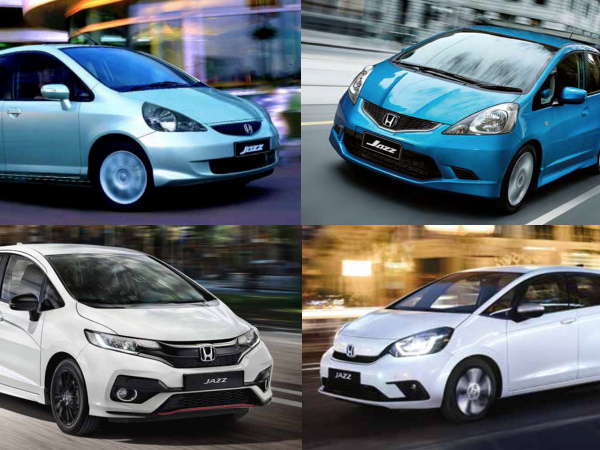
Auto Arena: Which generation of Honda Jazz (Fit) is your favorite?
LienMay 21, 2024

The 2025 Honda Prelude Is Back: Hybrid-Powered Coupe with Type R Chassis Tech
JohnAug 4, 2025

Honda Chief Engineer Goes Viral for Hairstyle, Formerly Led EV Dynamic Tuning
RobertJul 31, 2025
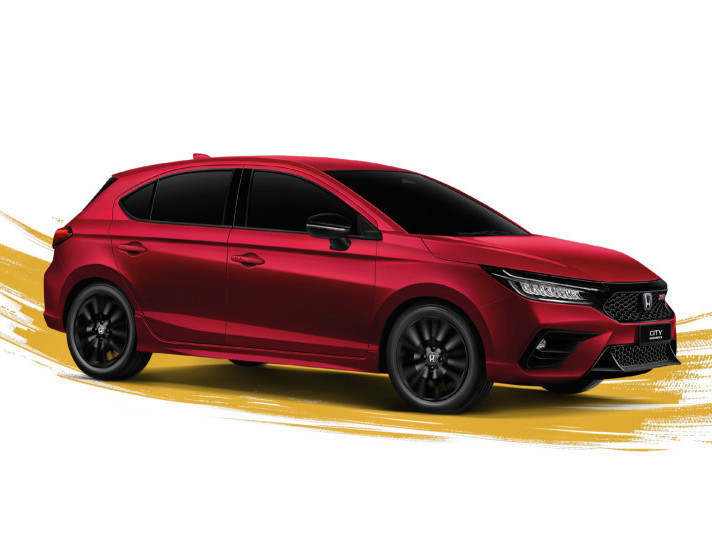
Honda City Hatchback Interior: Surprising Space Inside a Compact Body
WilliamJul 16, 2025
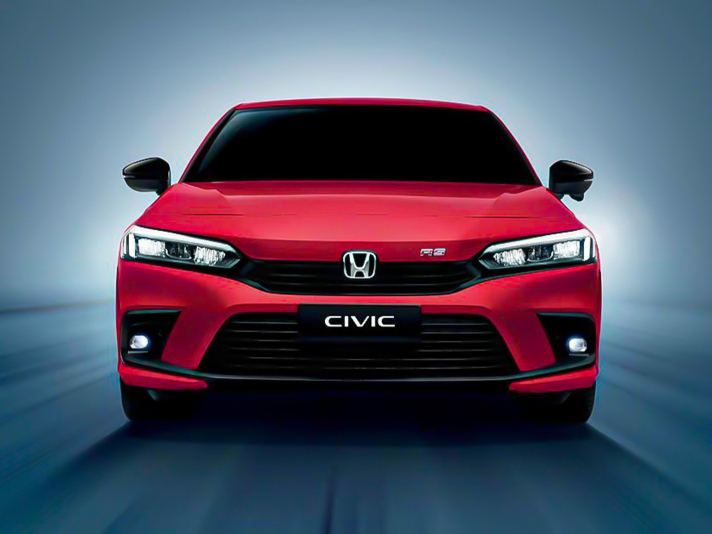
Honda Civic Interior Revealed: A Comprehensive Analysis of Civic’s Interior Charm
Kevin WongJul 10, 2025
View More



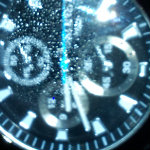





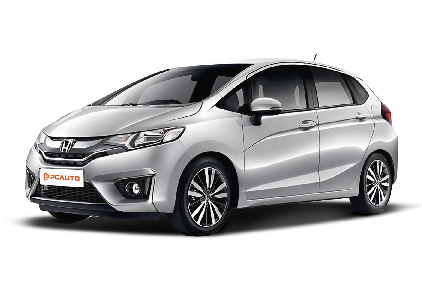
 Cars
Cars




Pros
Cons